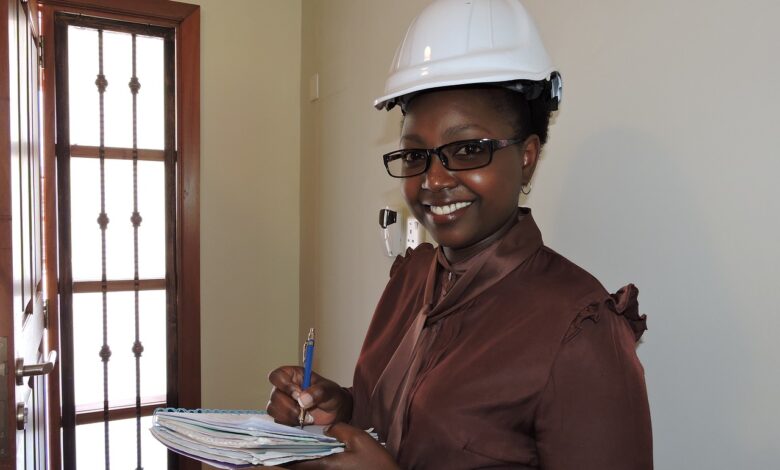Did Woman Design Brooklyn Bridge: Female Engineer, Who Designed, Women Architects

The iconic Brooklyn Bridge stands as a testament to architectural brilliance and engineering prowess, captivating the admiration of millions with its majestic presence. However, behind this marvel of suspension engineering lies a question that has intrigued many: Did a woman play a pivotal role in the design of the Brooklyn Bridge? Unraveling the mysteries of history, this inquiry delves into the fascinating narrative of the bridge’s creation, exploring the potential contributions of a lesser-known but influential figure in its design and construction.
Emily Roebling Brooklyn Bridge
Emily Warren Roebling, born on September 23, 1843, was a remarkable woman whose contributions played a pivotal role in the completion of the iconic Brooklyn Bridge in New York City. As the wife of chief engineer Washington Roebling, Emily stepped into a prominent position, effectively becoming the driving force behind the bridge’s construction during a critical phase.
Early Life and Marriage: Emily Roebling’s early life was marked by intellectual curiosity and a passion for education. She married Washington Roebling in 1865, and their partnership would soon be tested by the challenges of overseeing one of the most ambitious engineering projects of the time – the Brooklyn Bridge.
Role in the Brooklyn Bridge Project: In 1872, Washington Roebling fell ill due to decompression sickness, leaving him unable to continue as the chief engineer. Emily Roebling stepped up to manage the project in her husband’s stead. She quickly immersed herself in the technical aspects of bridge construction, attending engineering lectures and overseeing day-to-day operations on-site.
Engineering Acumen: Despite lacking a formal engineering education, Emily Roebling demonstrated exceptional aptitude in understanding the intricacies of cable construction, caisson disease, and the physics involved in building a suspension bridge. Her commitment to learning and hands-on involvement earned her the respect of the project’s engineers and workers.
Completion of the Brooklyn Bridge: Under Emily Roebling’s guidance, the Brooklyn Bridge was completed in 1883. On May 24th of that year, the bridge was officially opened to the public, linking the boroughs of Brooklyn and Manhattan. Emily’s intelligence, determination, and leadership played a crucial role in the successful realization of this engineering marvel.
Legacy: Emily Roebling’s contributions to the Brooklyn Bridge and her pioneering role as a female engineer have left an enduring legacy. Her story serves as an inspiration, breaking gender barriers in a field traditionally dominated by men. Today, the Brooklyn Bridge stands not only as a symbol of architectural achievement but also as a testament to the resilience and capabilities of a woman who defied societal norms to leave an indelible mark on history.
Brooklyn Bridge Female Engineer
The Brooklyn Bridge, an iconic symbol of New York City, stands as a testament to engineering prowess and innovation. Behind this monumental structure, there lies a fascinating chapter in history, notably the contribution of Emily Warren Roebling, a remarkable female engineer.
Emily Warren Roebling: Emily Warren Roebling played a pivotal role in the completion of the Brooklyn Bridge. Born in 1843, she was the wife of Washington Roebling, the chief engineer of the project. When Washington fell ill, Emily assumed a critical role in overseeing the bridge’s construction. She became the de facto project manager, demonstrating exceptional leadership and engineering acumen.
Achievements:
- Project Oversight: Emily took charge of the day-to-day operations, coordinating with engineers, workers, and suppliers to ensure the project’s continuity.
- Communication Hub: Despite facing skepticism due to societal norms of the time, Emily became a liaison between her bedridden husband and the construction site. She communicated his instructions, translating complex engineering jargon into practical guidance.
- Technical Proficiency: Emily delved into the technical aspects of bridge construction, studying engineering principles to address challenges and make informed decisions.
- Innovative Problem-Solving: Faced with numerous challenges, Emily’s innovative problem-solving skills were instrumental in overcoming obstacles during the bridge’s construction.
Who Designed Brooklyn Bridge?
The iconic Brooklyn Bridge, a marvel of engineering and architecture, was designed by John Augustus Roebling. Born in Germany in 1806, Roebling was a skilled civil engineer who immigrated to the United States in 1831. His vision for a bridge connecting Manhattan and Brooklyn began to take shape in the 1850s.
Tragically, Roebling’s involvement in the project was cut short due to a fatal accident during the bridge’s early construction stages. His son, Washington Roebling, took over as chief engineer despite facing health challenges, including decompression sickness.
Washington Roebling continued and completed the construction of the Brooklyn Bridge, overseeing its intricate cable system and Gothic-inspired towers. The bridge, spanning the East River, opened to the public on May 24, 1883, and stands as a testament to the Roeblings’ engineering prowess and determination. Today, the Brooklyn Bridge remains an iconic symbol of New York City and a masterpiece of 19th-century engineering.
Women Architects in History
Women architects have played a significant yet often overlooked role in shaping the built environment throughout history. Despite facing societal challenges and gender biases, many talented women have made remarkable contributions to architecture, leaving an indelible mark on the profession.
| Name | Birth-Death | Notable Works | Contribution |
|---|---|---|---|
| Zaha Hadid | 1950-2016 | Heydar Aliyev Center, Guangzhou Opera House | Renowned for her avant-garde designs and fluid architectural forms, Zaha Hadid was the first woman to receive the Pritzker Architecture Prize in 2004. |
| Maya Lin | Born 1959 | Vietnam Veterans Memorial, Civil Rights Memorial | Lin gained fame with her minimalist and thought-provoking designs. She received the Presidential Medal of Freedom in 2016 for her contributions to architecture. |
| Dame Hadid DeReeves | 1896-1989 | DeReeves Residence, Morris Gift Shop | A pioneering architect of her time, Dame Hadid DeReeves was the first African American woman to become a licensed architect in the United States. |
| Norma Merrick Sklarek | 1926-2012 | Pacific Design Center, Terminal One at LAX | Breaking racial and gender barriers, Sklarek was the first African American woman to be licensed as an architect in both New York and California. |
| Denise Scott Brown | Born 1931 | Sainsbury Wing of the National Gallery, Venturi, Scott Brown and Associates | An influential architect and planner, Denise Scott Brown co-authored groundbreaking works on urban planning and design with her husband, Robert Venturi. |
| Lina Bo Bardi | 1914-1992 | São Paulo Museum of Art, Glass House | A trailblazer in modernist architecture, Lina Bo Bardi left an enduring legacy through her innovative designs and commitment to social and cultural issues. |
Washington Roebling and Emily Roebling
Washington Roebling and Emily Roebling played significant roles in the completion of the Brooklyn Bridge, an iconic symbol of American engineering and perseverance. Washington Roebling, the chief engineer, faced numerous challenges during the construction, including a debilitating illness known as “the bends.” Despite his health issues, he continued to oversee the project.
When Washington fell ill, Emily Roebling, his wife, stepped in to manage the day-to-day operations of the bridge. She became a crucial link between her husband and the construction site, effectively communicating his instructions and ensuring the project’s continuity. Emily’s dedication and knowledge of engineering principles were instrumental in the successful completion of the Brooklyn Bridge in 1883. The Roeblings’ collaborative efforts left an indelible mark on American history, showcasing the importance of determination and partnership in achieving monumental feats.




Wow, I never knew that a woman played such a crucial role in the design of the Brooklyn Bridge. Her contribution is a remarkable example of female engineering prowess.